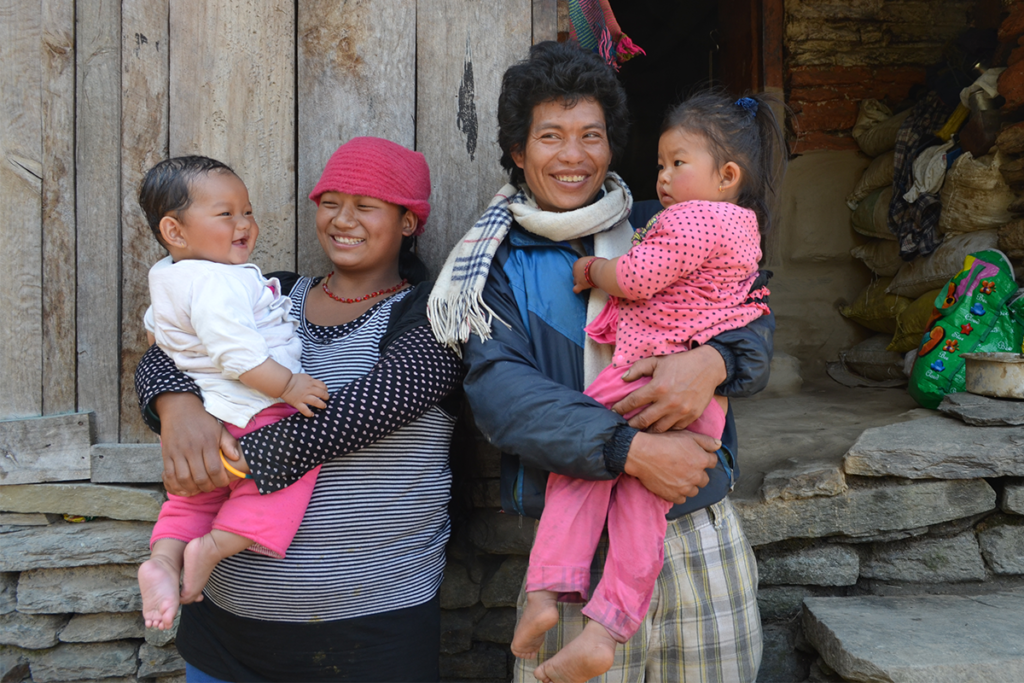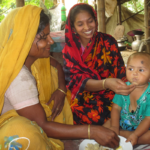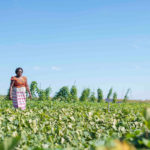Stunting affects approximately 155 million children globally, and it is one of the most significant impediments to human development. The World Health Organization (WHO) defines stunting as “impaired growth and development that children experience from poor nutrition, repeated infection, and inadequate psychosocial stimulation.” It has both short- and long-term consequences for individuals and societies which are mostly irreversible.
While countries in Africa and Asia share the highest burden of all forms of malnutrition, Nepal has made tremendous efforts to reduce stunting among children under the age of five with the implementation of its multisector nutrition plans. Among those children, the rate of stunting has notably declined from 49% in 2006 to 41% in 2011 and to 36% in 2016 – during a time of social, economic and political transition in the country. Nepal still needs to achieve an annual decline of 3.09%, however, to meet the global stunting target by 2025. Therefore, my colleagues and I conducted a study to explore the prominent determinants of stunting which can inform evidence-based policymaking and future interventions. Here I describe our findings. Our full results are published in BMC Nutrition.
Evaluation methodology
We used publicly-available data from the Nepal Demographic and Health Surveys (NDHS) in 2006, 2011 and 2016 to explore the prevalence of stunting. Then we conducted secondary analysis of the available data to explore the determinants.
WHO considers children stunted if “their height-for-age is more than two standard deviations below the WHO Child Growth Standards median.” The height-for-age z-scores from the NDHS served as our single outcome variable. In table 2 in our article, we present prevalence of stunting by a variety of descriptive variables for different demographic groups.
Next, we used logistic regression models to explore the potential predictors for stunting. We present these determinants in table 3 in our article. For the adjusted odds ratio regression, we adjusted for variables like household characteristics (e.g., family size, headship of the household, caste/ethnicity, wealth quintile, location, food security status, access to drinking water and a toilet), maternal characteristics (e.g., mother’s age, mother’s years of education, number of living children, mother’s employment status, mother’s BMI and anemia status), and child characteristics (e.g., age and sex of child, birth order, size of child at time of birth and anemia status) to explore the potential determinants for stunting.
Key findings
Demographic factors
Our findings suggest that stunting is higher in Nepal among larger families, children from the Dalit caste/ethnic group, children residing in rural and mountain regions, and children from severely food insecure households. Furthermore, the number of children living in a household also determines the prevalence of stunting.
Children from households in the poorest wealth quintile are more likely to be stunted than children from wealthier households. This finding is also concurrent with the UNICEF conceptual framework for malnutrition where poverty or financial capital is one of the basic factors for undernutrition.
Maternal nutrition factors
Our findings show a mother’s education is inversely proportional to stunting among children. One hypothesis is that educated mothers are more informed, and hence more capable of proper feeding and caring for their children (Joshi et al., 2011).
Child nutrition factors
Our findings show children beyond the age of 24 months (24–59 months) are at more risk of being stunted than children between the ages of 0–23 months. These results can likely be attributed to the value of breastfeeding.
Perhaps of no surprise, our findings show a strong association between low birth weight and stunting. Children who are born with low birth weight are 1.5 times more likely to be stunted later in life. These children are more vulnerable and require additional nutrition and care.
Additionally, our findings also show a significant association between anemia among children and stunting. Anemic children are about 1.6 times more likely to be stunted.
Discussion
For example, future interventions can better target anemia and low birth weight among children. Anemia in Nepal has increased over the years (MSNP II, 2017) and, as our findings show, children with anemia have higher odds of being stunted. Low birth weight is another predictor for stunting. The prevalence of low birth weight in Nepal has shown little or no improvement over the last 15 years (MSNP II, 2017). Nepal must vigorously work on strategies to reduce anemia and reduce the long stagnant low birth weight among children to achieve the global stunting targets on time.
Please share in the comments what strategies have worked for you in other developing countries to combat childhood stunting.
Photo caption: A couple with their children in Myagdi, Nepal
Photo credit: © 2013 Dipak Raj Sharma/Suaahara Program/JHUCCP, Courtesy of Photoshare



